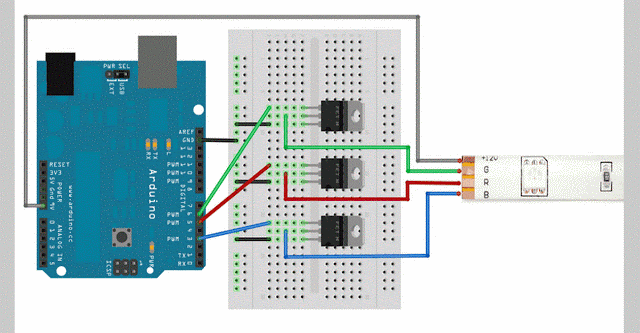Last time, we ended with our foam model of the "wave" shape with LEDs set in curved rows to match the top of the design. As we began looking into our materials, such as LEDs, we realized that we did not want to solder together a million individual LEDs. So, we headed over to Adafruit to look for strips of LEDs that can be red, yellow, and green. We found these RGB LED Strips. However, these LEDs we will be using can't bend, so we must arrange the LEDs in straight rows instead of curved. We did some thinking on the board about how to arrange these and how many we needed.
In this picture, we were thinking of 10 rows of LEDs for each section, but later we spaced them out so we only use 5 rows. We still wanted the red section to be the largest, so that the sound level is related to the size of the section, so the strips in the red section would be longer than in the green section. Here are our final calculations for the LEDs. We decided we needed 4.5 meters of LEDs, but we can't order a half meter, so we ordered 5 meters.
The picture above is our guide for construction of our project. It shows the spacing of the strips, and how many we need for each section. The LED strips are 10 cm long, but they come connected together. Each row will be already connected, but then we will have to solder each row in a section together.
Next, we needed to make sure we have everything to use these LEDs. Adafruit has a great resource on using and wiring these LEDs: RGB LED Strips Usage. These LEDs require transistors, and Adafruit recommends using a N-channel MOSFET STP16NF06. Each strip (in this case each section because the strips will be soldered together for each individual section) usually requires 3 transistors, one each for the red, green, and blue wires.
So in theory we would need 9 transistors; however, for the red section, we only need 1 for the red wire because we won't be using green and blue. And for the green section, we only need 1 for the green wire because we won't be using the red and blue. To create yellow, we only need red and green, so we will need 2 transistors. So in total we ordered 4 transistors.
Those were the only materials we needed to buy online. Our other materials we have in the engineering lab. These are:
-Arduino Uno
-Protoboard
-Lego NXT Sound Sensor
-Servo Motors
-Lego Gears
-Lego Actuator
-Delrin (for backing piece, faces, and messages)
-Solder and wires
-Legos (to attach sound sensor and motors)
-Tools/Hot Glue/Laser Cutter



Nice idea! Looks like it came together nicely, you could've used MOSAIC™ flexible LED's to
ReplyDeleteachieve the bending you wanted. There's also some other brands that you can easily find online. Overall I thought you idea was very innovative and very applicable to the classroom setting!